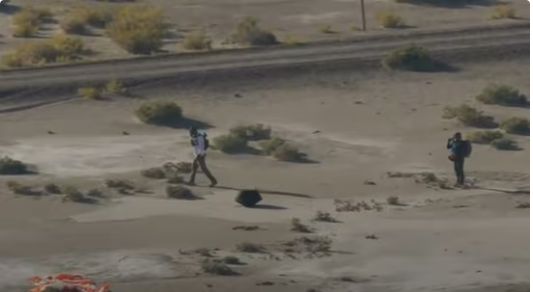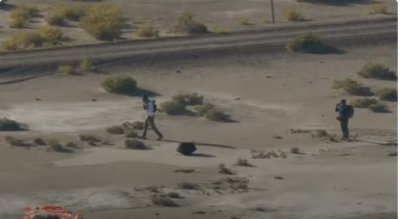A capsule belonging to the National Aeronautics and Space Administration (NASA) safely landed today, Sunday, in the American desert carrying the largest soil sample ever collected from an asteroid. The success of this mission, a joint effort between NASA and the University of Arizona, results in the transfer of the third asteroid sample, the largest ever, to Earth for analysis, following two similar missions by the Japanese space agency that concluded in 2010 and 2020.
The capsule separated from the spacecraft "OSIRIS-REx" while it was passing 67,000 miles above Earth and landed within a designated landing area west of Salt Lake City in the Army's Utah Test and Training Range. This landing, broadcast live by NASA, culminates a six-year joint mission between the space agency and the University of Arizona.
This sample is the third to be transferred from an asteroid to Earth for analysis, following two similar missions by the Japanese space agency that concluded in 2010 and 2020, but this sample is the largest ever. OSIRIS-REx collected its sample three years ago from the asteroid Bennu, a small carbon-rich asteroid discovered in 1999, classified as a "near-Earth object" due to its relatively close pass to our planet every six years, although the chances of impact are low.
Bennu appears to be made up of a loose collection of rocks and is only 500 meters wide, small compared to the Chicxulub asteroid that struck Earth about 66 million years ago, leading to the extinction of the dinosaurs. The OSIRIS-REx spacecraft was launched in September 2016, arrived at Bennu in 2018, and spent about two years orbiting the asteroid before coming close enough to collect a sample from its surface using its robotic arm on October 20, 2020.
The spacecraft began its 1.2 billion-mile journey back to Earth in May 2021, which included two orbits around the Sun. The Bennu sample is estimated to weigh about 250 grams, significantly exceeding the five-gram sample transferred from the Ryugu asteroid in 2020 and the tiny sample from the Itokawa asteroid in 2010.
Once the capsule is secured, the sample will be flown to a "clean room" at the Utah Test and Training Range for initial examination before being transferred to NASA's Johnson Space Center in Houston, where it will be divided into smaller samples for about 200 scientists in 60 laboratories around the world to study.




